Overview and Objective
In Isometric Drawings: Part 1, students will construct the side views of the three-dimensional objects and then, they will construct the 3D objects whose side views are given.
Before starting this activity, you may want to check the Isometric Drawings Part I Task.
Warm-Up
You may use an isometric puzzle similar to the one in the Isometric Drawings Part I Task. Show the drawing to students and ask them how many cubes they see.
Students may answer as six or seven. You may want to mark the cubes to clarify the results for all students.

Illustrators and designers often add side views to their drawings to make sure that their audience fully understands the drawings.
Main Activity
Clarify with the students that during this activity, the blue rhombus from the polygons toolbar will be used to create the unit cubes.
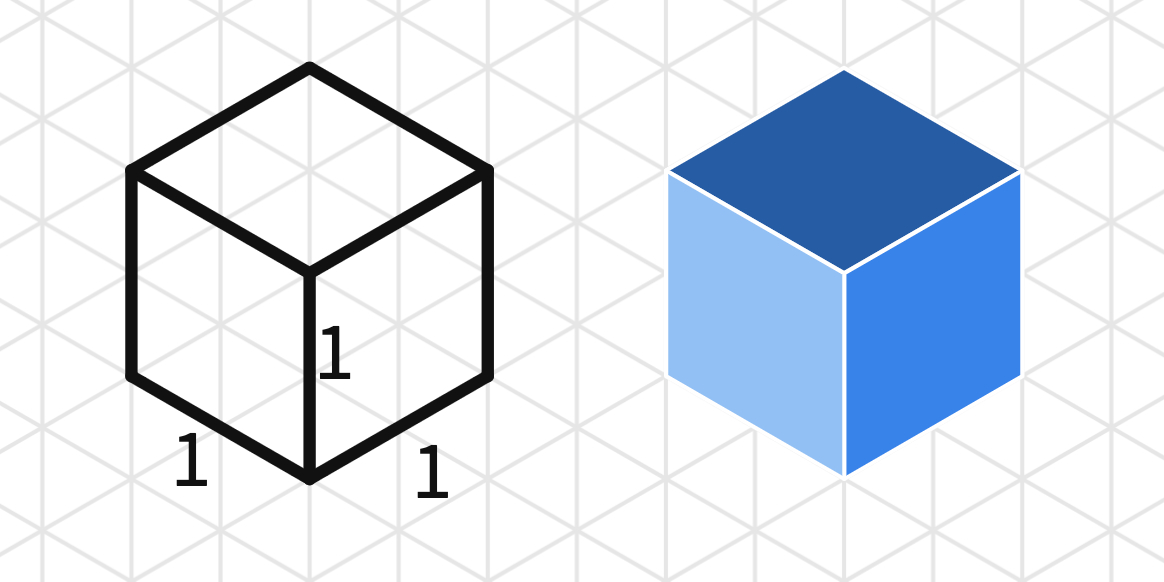
Start with the L shape (L-Prism). You may use this Polypad to demonstrate the side views of the L-shape. Think of a mirror cube surrounding the 3D object. Each mirror will only reflect the sides they are facing.
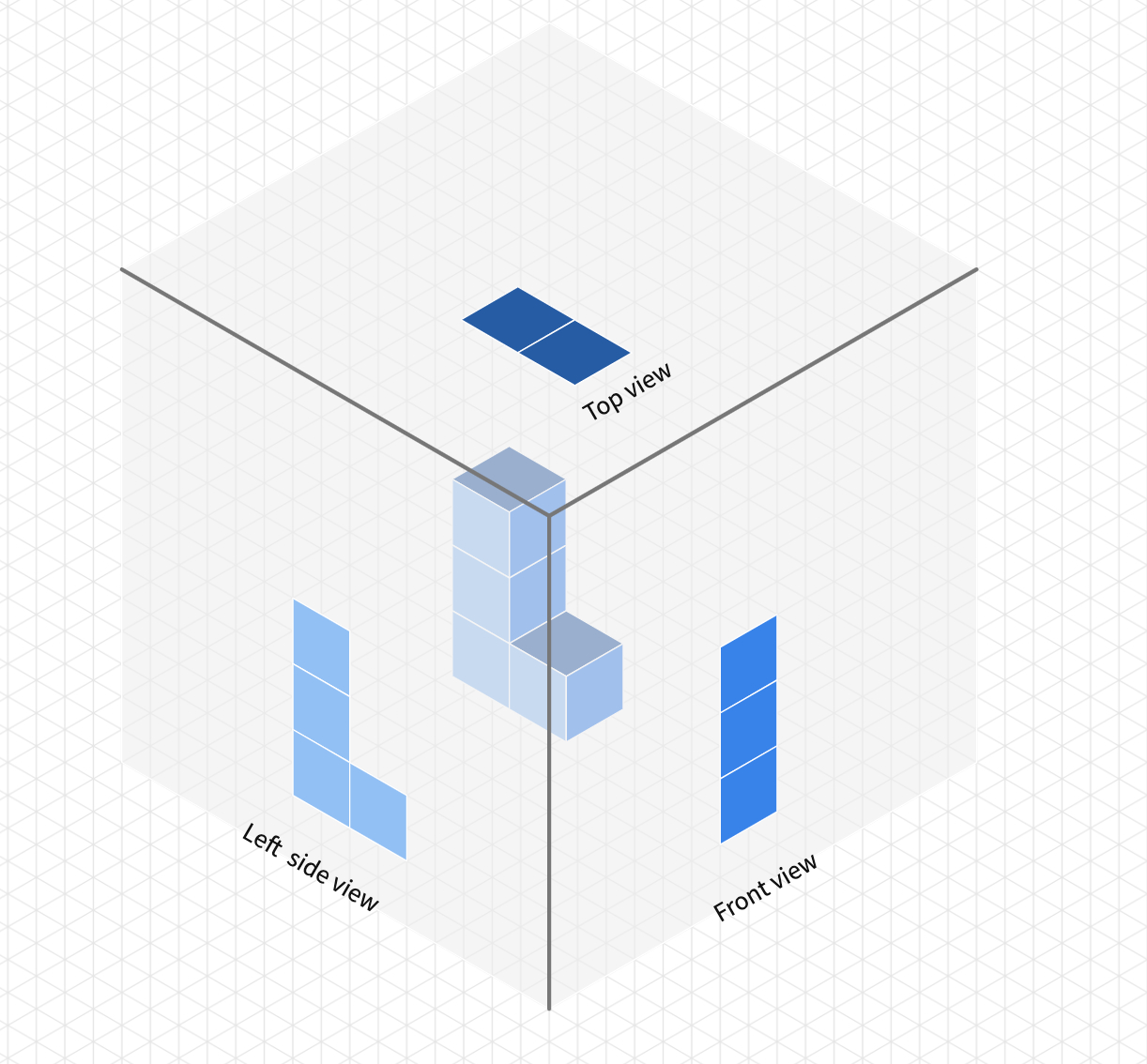
Invite students to draw the side views of another shape using the mirror cube.
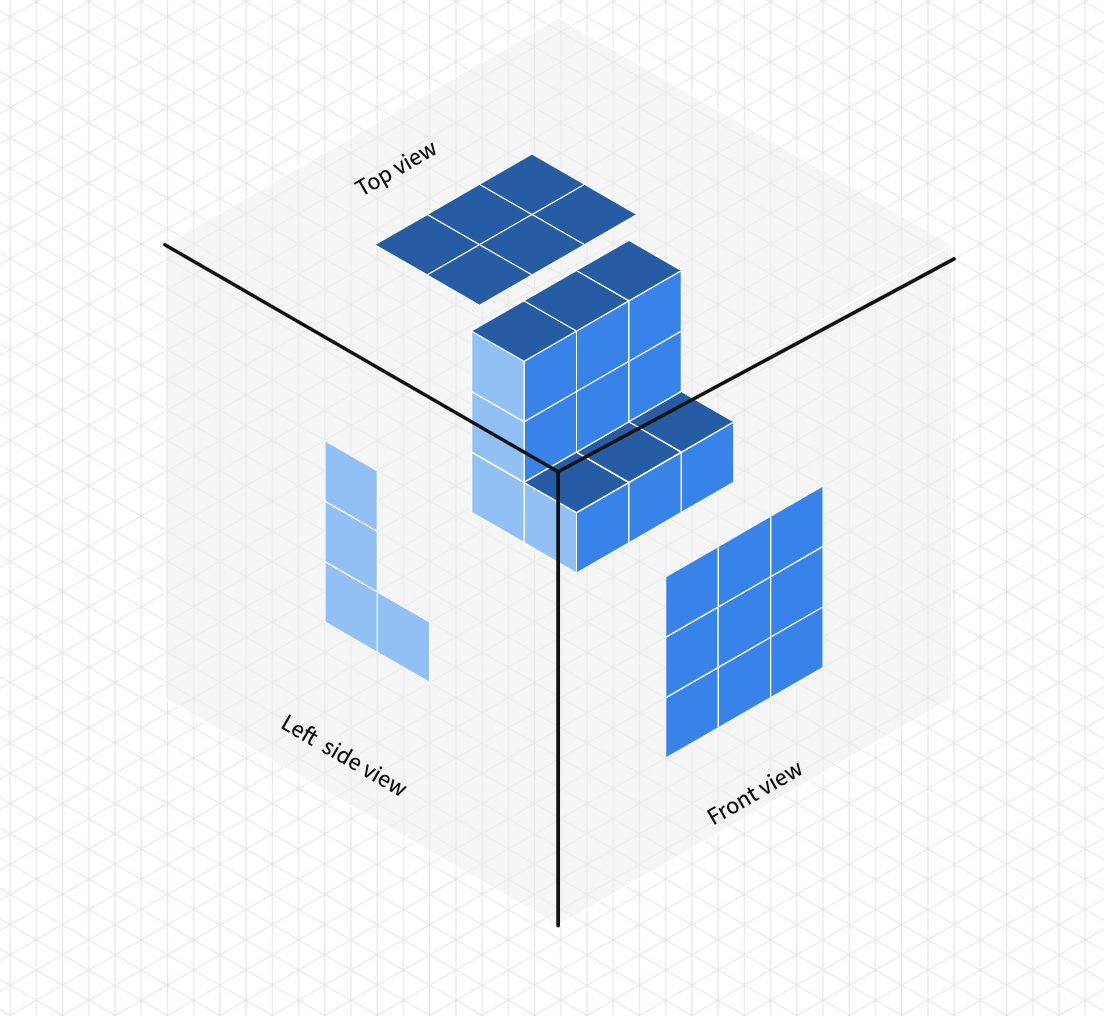
Share this Polypad with the students and ask them complete the side views of the given 3D objects.
Share some student work with the class. Invite students to share which approaches they found most useful when drawing the 3D figures.
Drawing what an object looks like from several different views is called orthographic projection. Orthographic projection is also called engineering drawings or plan views. The orthographic projection can have more than three side views if the object has unique sides that would not be fully described by three views
If an object which is not formed by unit cubes were to be drawn by the orthographic projection, additional lines are used to represent changes in depth.
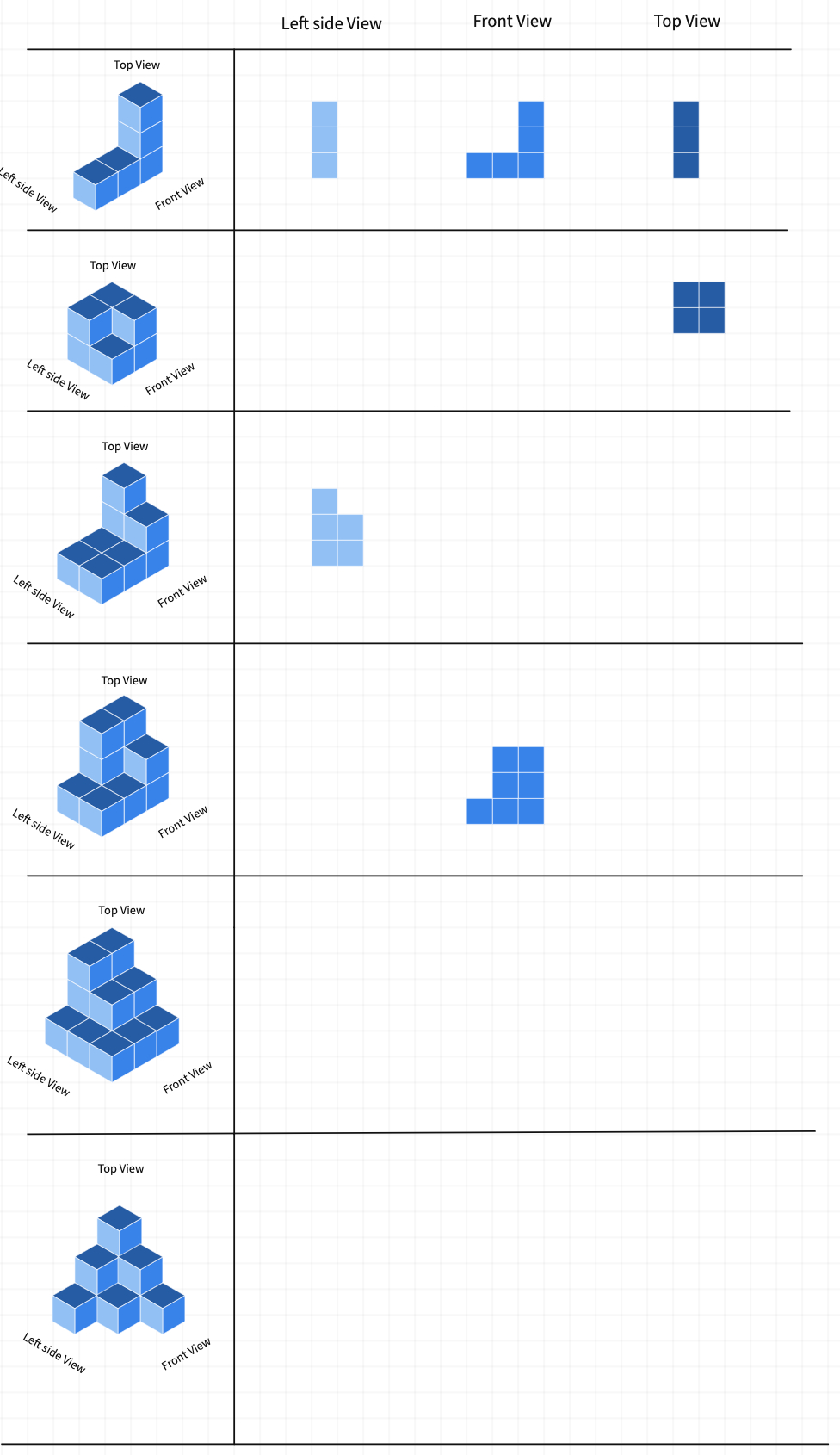

Students will now construct the 3D objects given the side views. Let students work as pairs or groups by sharing this Polypad. You may ask them to predict the number of unit cubes for each construction before they start drawing. Students can compare their predictions after each construction.
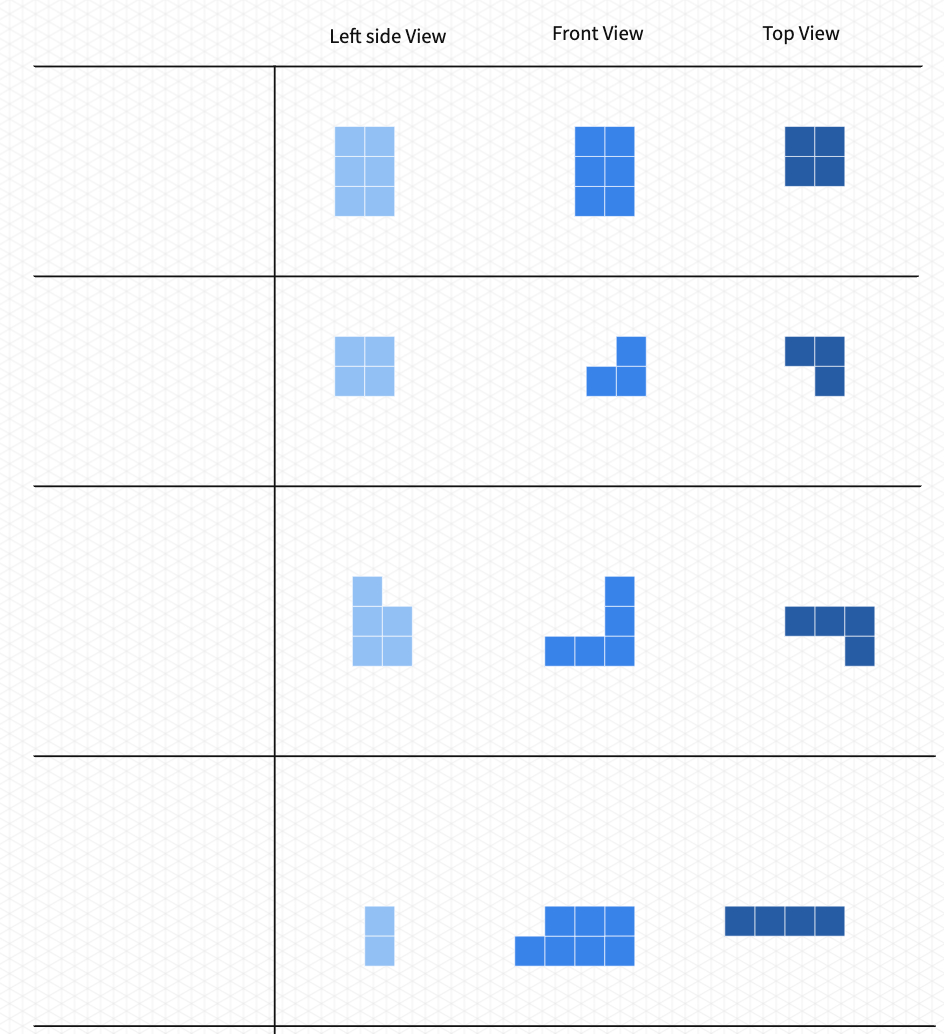
Closure
You may end the lesson by discussing that some objects may require more side views to be constructed accurately. If you have completed Isometric Drawings: Part I with the students, you may also discuss which method (number diagrams or side views) is easier to construct 3D objects.
Polypads for This Lesson
To assign these to your classes in Mathigon, save a copy to your Mathigon account.
Click here to learn how to share Polypads with students and how to view their work.